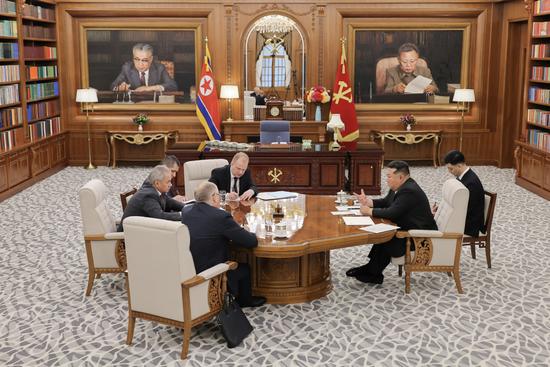
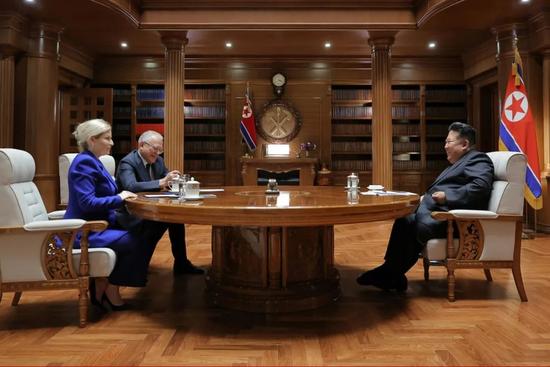
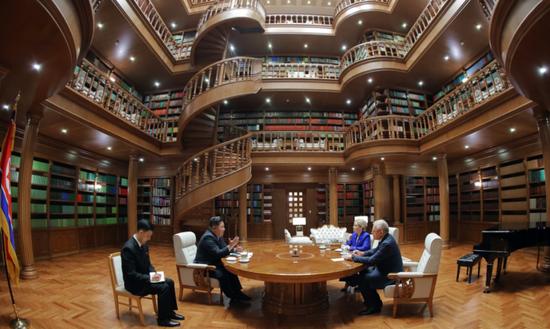
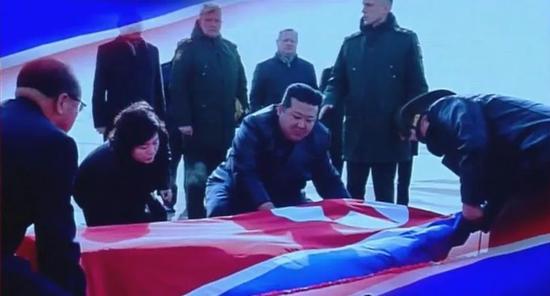
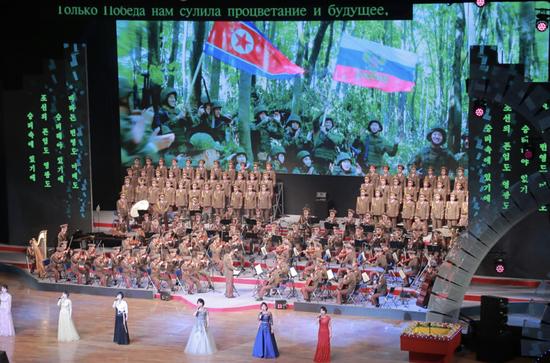
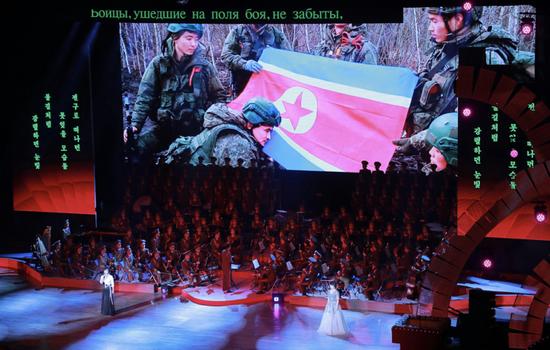
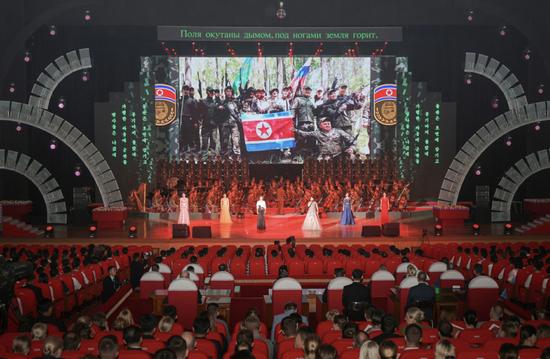
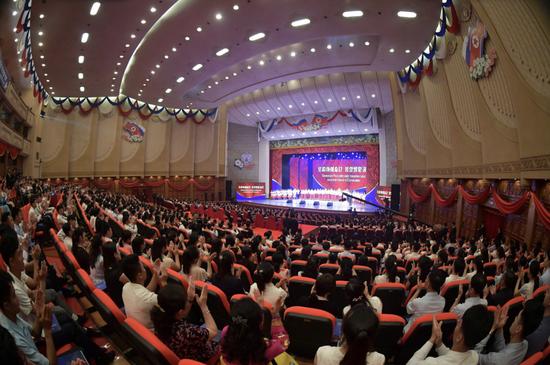
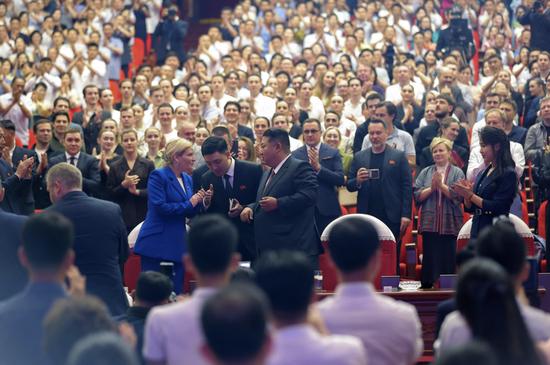
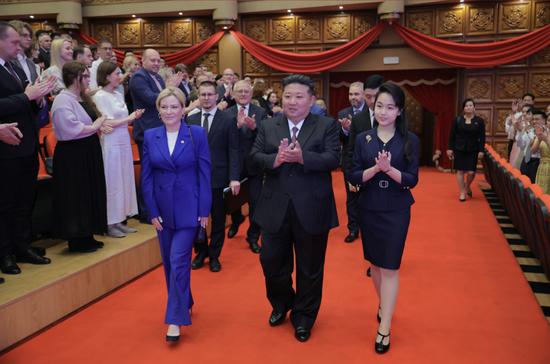
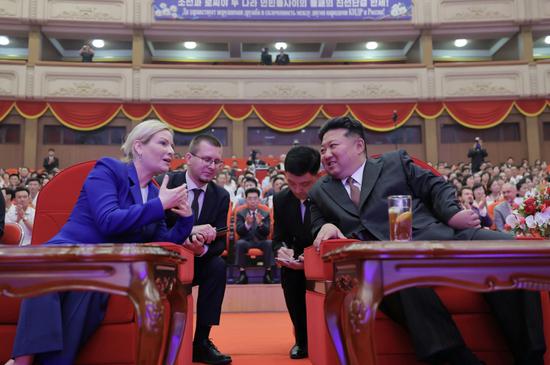
On June 29th, Kim Jong Un, the Chairman of the Workers’ Party of Korea and Chairman of the State Council, accompanied by his daughter, sat down side by side with the Russian Culture Minister, Olga Lyubimová. The stage was adorned with a performance by artists from both Korea and Russia, marking one year since the signing of the Comprehensive Strategic Partnership Treaty between the two countries.
The direct news observed that on the screen at the event, images of the Korean military fighting in Kursk, Russia, were displayed alongside the flag of the Korean Republic. Notably, a series of photos showed a row of six coffins, with Kim Jong Un kneeling in front of one to lay a flag over it and gently caress the coffin, displaying deep sorrow. Kim Jong Un’s sister, Kim Yojung, and the Foreign Minister of South Korea, Choi Soon-hyun, also appeared in the same frame. For the first time, this was confirmed in official South Korean footage: Kim Jong Un had personally attended the site where last November, the bodies of fallen Korean soldiers were received from Russia.
Kim Jong Un confirmed in April this year that troops would be sent to Kursk in Russia to fight against Ukrainian forces. He highly praised the performance of the Korean soldiers and promised to establish a monument in Pyongyang. However, he did not disclose the number of casualties. The Ukrainian Ministry of Defense Intelligence Bureau revealed in February this year that among the first 11,000 soldiers dispatched by North Korea in October last year, more than 4,000 had been killed or injured. South Korea estimated in December last year that at least 100 South Korean soldiers stationed in Russia had died or been wounded during that month alone.
More attention has been drawn to the high-profile diplomatic scene unfolding in Pyongyang as the Comprehensive Strategic Partnership Treaty signed one year ago. In just 25 days, Kim Jong Un hosted two delegations from Russia – one focused on security and culture – in the same building, choosing two distinct yet previously rarely public spaces for their meetings. This marked Kim Jong Un’s second attempt to unlock “new venues” for Russian guests within 25 days.
According to photos released by North Korea, the meeting space with Liubimová resembled a library, four stories high, filled with neatly arranged books, designed elegantly and grandly. Surrounding the round table where they met, there was also a piano, highlighting the cultural atmosphere of the meeting space while subtly revealing Kim Jong Un’s personal interest.
Direct News noted that the overall decor of this room bore similarities to Kim Jong Un’s office, which was recently fully exposed in a panoramic photo, showing a classical style but richer in cultural elements, reflecting the meticulous care of North Korea in hosting officials from different backgrounds.
In contrast to Suh Il-gu’s meeting with Liubimová, Kim Jong Un chose two distinct meeting spaces, each filled with extensive collections of books, symbolizing profound meaning. Direct News believes that the diplomatic setting presented by Kim Jong Un when welcoming Russian officials is deeply meaningful: first introducing Suh Il-gu into the office symbolizing power core to announce military mutual trust between North and South; then seating Liubimová in a “private library,” allowing for the warmth of cultural exchange to be magnified; and finally playing a video of “personal welcome” at the Grand Theater, further reinforcing the narrative of cooperation between North and South.